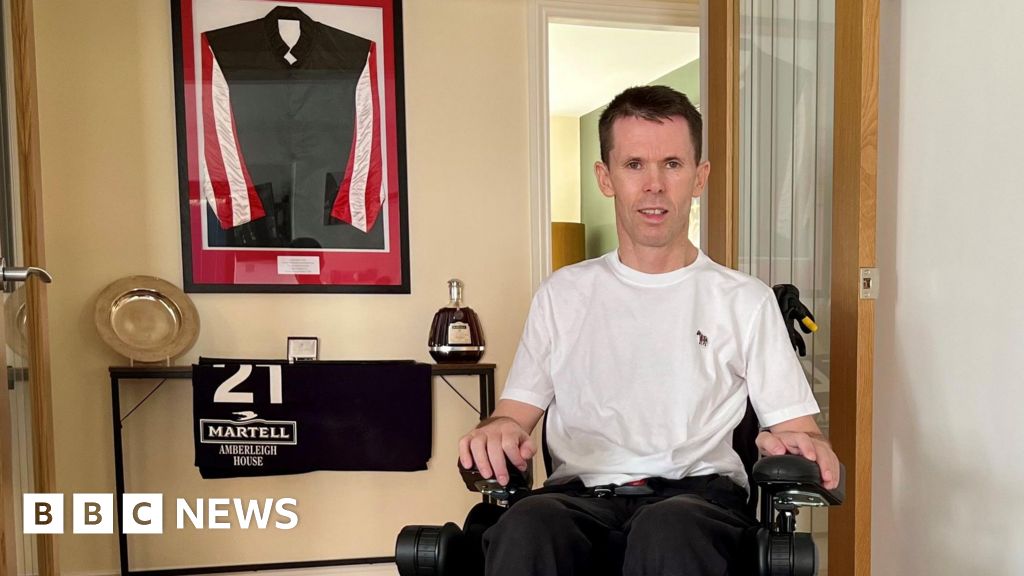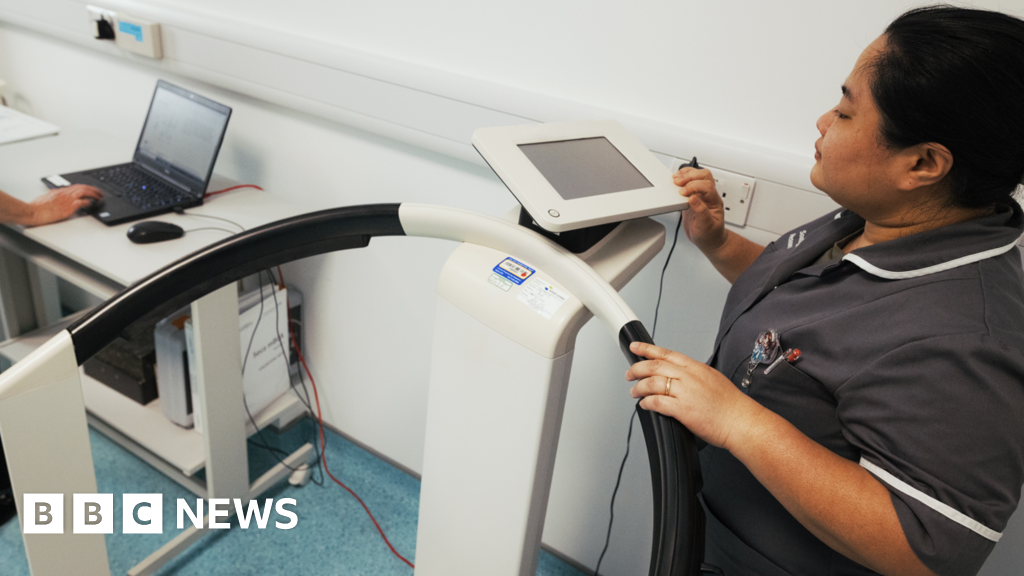- Pakistan Reports New Clashes With Afghan Forces Across Border Bloomberg.com
- ‘New Normal’: Is Pakistan trying to set new red lines with Afghan Taliban? Al Jazeera
- Army responds to ‘unprovoked fire’ by Afghan Taliban, TTP at Kurram border:…
Blog
-
Pakistan Reports New Clashes With Afghan Forces Across Border – Bloomberg.com
-

Former Stanley library to become community gym
Pamela BilalovaNorth East and Cumbria
 Google
GoogleWork on the site should start within three years A former library will be turned into a community gym aiming to boost people’s mental health.
The empty building, on High Street in Stanley, County Durham,…
Continue Reading
-

WFW advises Ovolo on strategic APAC franchise partnership with Wyndham
Watson Farley & Williams (“WFW”) advised boutique hotelier Ovolo Group (“Ovolo”) on a strategic partnership with Wyndham Hotels & Resorts (“Wyndham”) that will see five Ovolo hotels join the Wyndham portfolio, and Wyndham rolling the brand out in Asia Pacific.
Under the agreement, Ovolo retains brand and operational control of the hotels whilst exclusively partnering with Wyndham for distribution and to pursue franchised growth opportunities throughout the Asia Pacific region. The five hotels – one in Hong Kong and four across Australia – will be integrated into Wyndham’s global sales, marketing and distribution platforms, including its 120 million-member Wyndham Rewards loyalty programme.
Hong Kong-based Ovolo is an independent hospitality company known for its innovation and disruption, owning and operating a collection of award-winning and individually designed lifestyle hotels and serviced apartments. Wyndham Hotels & Resorts is the world’s largest hotel franchising group by number of hotels, with over 9,200+ hotels in over 95 countries on 6 continents.
The cross-border WFW team that advised Ovolo was led by Sydney Hotels & Hospitality Partner Robert Williams, supported by Sydney Corporate and M&A Consultant Chris Greiner and Singapore Corporate Associate Meryl Tan.
Robert commented: “We are delighted to have supported Ovolo on this innovative and transformative transaction, which reflects the growing appetite for experiential travel and the increasing relevance of lifestyle brands in the global hospitality landscape. This transaction highlights the focus even the biggest global players have on genuine lifestyle brands and platforms, and WFW’s continued commitment to supporting hospitality entrepreneurs and ventures break the mould across the Asia Pacific region and beyond”.
Continue Reading
-

Liverpool friends finish childhood kung-fu movie 47 years on
Lynette HorsburghNorth West
 Paul Sudbury
Paul SudburyPaul Sudbury and his friends re-started filming The Big Boss after 47 years A group of friends who spent their childhoods in the 1970s making mini-movies reunited to complete one of them 47 years later.
Paul…
Continue Reading
-

Paralysed jockey Graham Lee says ‘without hope you have nothing’
Jamie CoulsonYorkshire health correspondent
 BBC
BBCGraham Lee was paralysed from the neck down after a fall in November 2023 A Grand National-winning jockey has spoken about the importance of keeping a sense of hope, after a horrific fall left him…
Continue Reading
-

Proposed Regulatory Framework Update for Virtual Asset Staking in the ADGM : Clyde & Co
The Financial Services Regulatory Authority (FSRA) of Abu Dhabi Global Market (ADGM) has released Consultation Paper No. 10 of 2025, introducing a dedicated regulatory framework for the staking of virtual assets. This proposal marks a significant evolution in ADGM’s approach, transitioning from initial recognition of staking to the establishment of a formal regulatory perimeter around such activities. By focusing on staking, the FSRA aims to enhance ADGM’s position as a forward-looking jurisdiction for digital asset innovation, while ensuring robust oversight of emerging virtual asset functions.
In December 2024, the FSRA signalled its intent to regulate staking by raising key questions around the associated risks in its consultation papers. These initial papers concentrated on foundational issues, such as defining operational models for staking businesses. However, they did not address broader regulatory considerations; specifically, the principles that trigger oversight and the obligations placed on authorised persons conducting staking activities.
Consultation Paper No. 10 of 2025 seeks to close these gaps by proposing a set of regulatory triggers and requirements for entities that stake virtual assets on behalf of their clients.
What triggers regulatory oversight?
Under the proposals, regulatory oversight is triggered when staking activities involve accepted virtual assets within the scope of regulated operations. Authorised Persons who hold or control virtual assets for the purpose of staking are required to obtain a Financial Services Permission for either custody or managing assets. Virtual Asset Custodians may only stake client assets upon receiving explicit instructions from the client. If such custodians intend to exercise discretion in staking decisions, they must secure a Financial Services Permission for managing assets. Conversely, Virtual Asset Managers are permitted to stake client virtual assets on a discretionary basis, provided they are responsible for selecting appropriate staking opportunities and ancillary service providers.
Areas outside the scope of the proposal
The proposed framework draws clear boundaries around what falls outside the scope of regulatory oversight. Solo staking remains unregulated, as participants act solely on their own account without any form of intermediation. Service providers that deliver technical infrastructure to support staking are also excluded, provided they do not hold or control virtual assets. Additionally, the regime does not extend to other yield-generating activities such as liquidity mining, yield farming, or the issuance of liquid staking tokens which are also typically referred to as staking. Its focus is strictly limited to arrangements involving participation in blockchain validation under a proof-of-stake consensus mechanism.
Regulatory obligations
The proposal also sets out a series of regulatory obligations for authorised persons engaging in staking activities involving client virtual assets. These entities must:
- comply with all existing applicable requirements under Chapter 17 of COBS and AML rules
- disclose material risks to clients in a clear, fair, and non-misleading manner
- conduct due diligence on staking service providers and smart contracts
- enter into written agreements with staking service providers
- provide client reporting
- obtain FSRA non-objection
This paper signals a turning point in how staking is treated under regulatory frameworks. It’s a prime opportunity for firms to align early with supervisory expectations and shape compliant, scalable staking models before the market matures.
Who should care?
- VA Custodians
- VA Managers
- Exchanges
- Staking Infrastructure Providers
- DeFi platforms
What to watch and next steps
It is imperative that clients closely review the supporting guidance to be issued by the FSRA on implementation of this proposal, as it will clarify critical nuances in regulatory oversight. In particular, forthcoming guidance on staking-specific disclosures will be essential for ensuring compliance and shaping operational responses. Understanding these details will help entities navigate the framework in the future.
At present, clients should begin by evaluating whether they meet any of the regulatory thresholds outlined in the framework. From a commercial standpoint, firms engaged in or planning to engage in these activities will find new opportunities emerging. However, a clear understanding of their eventual obligations to the FSRA will be essential to ensure full compliance and avoid regulatory pitfalls.
ADGM’s updated regulatory framework signals a broader shift toward functional regulation; focusing on what digital assets do, rather than simply what they are. With the inclusion of specific staking activities under its oversight, the FSRA is reinforcing ADGM’s position as a forward-looking jurisdiction committed to shaping the future of the digital asset ecosystem.
Our team is advising clients across sectors on regulatory compliance, infrastructure, and risks. If you would like to discuss how these proposed reforms could affect your business or how to turn regulatory change into competitive edge please get in touch with Tom Bicknell or Barkha Doshi.
Continue Reading
-

Southampton University to research cancer care body composition
A university has been awarded £1.2m to carry out pioneering research into how body composition could improve breast cancer treatments.
The University of Southampton will partner with eight NHS trusts on the programme, paid for by The World Cancer…
Continue Reading
-

Scientists unlock a 100-year-old quantum secret to supercharge solar power
In a breakthrough that connects modern science with ideas first explored a century ago, researchers have witnessed a surprising phenomenon once thought possible only in inorganic metal oxides appearing inside a glowing organic semiconductor…
Continue Reading
-

Scientists unlock a 100-year-old quantum secret to supercharge solar power
In a breakthrough that connects modern science with ideas first explored a century ago, researchers have witnessed a surprising phenomenon once thought possible only in inorganic metal oxides appearing inside a glowing organic semiconductor…
Continue Reading
-
ASML reports €7.5 billion total net sales and €2.1 billion net income in Q3 2025
This document and related discussions contain statements that are forward-looking within the meaning of the U.S. Private Securities Litigation Reform Act of 1995, including statements with respect to plans, strategies, expected trends, including trends in the semiconductor industry and end markets, expected trends in product mix and geography, and business environment trends, expected growth in the semiconductor industry by 2030, statements with respect to AI including goals for use of AI in our portfolio and the expected impact of AI demand on our business, industry and results, statements with respect to EUV adoption, our expectation that lithography will remain at the heart of customer innovation, expected increase in critical lithography exposures, statements with respect to our product portfolio, our expectation that customer fundamentals remain strong, expected reduction in level of business uncertainty, expected demand, shipments, bookings, outlook of market segments, outlook and expected financial results including outlook and expected results for Q4 2025, including net sales, Installed Base Management sales, gross margin, R&D costs, SG&A costs, outlook and expected financial results for full year 2025, including expected full year 2025 total net sales and growth, gross margin, and estimated annualized effective tax rate and expected IBM sales, expectation of a very strong fourth quarter, and expectations with respect to EUV and DUV sales in 2026, expectations with respect to total 2026 net sales, statements made at our 2024 Investor Day, including modelled revenue and gross margin opportunity for 2030, our expectation to continue to return significant amounts of cash to shareholders through growing dividends and share buybacks, expectations with respect to our 2022-2025 share buyback program and plan to announce a new share buyback program in January 2026, and statements with respect to dividends, statements with respect to expected performance and capabilities of our systems and customer plans, statements with respect to our ESG strategy and commitments and other non-historical statements. You can generally identify these statements by the use of words like “may”, “expect”, “will”, “could”, “should”, “project”, “believe”, “anticipate”, “expect”, “plan”, “estimate”, “forecast”, “potential”, “intend”, “continue”, “target”, “future”, “progress”, “goal”, “model”, “opportunity”, “commitment” and variations of these words or comparable words. These statements are not historical facts, but rather are based on current expectations, estimates, assumptions, plans and projections about our business and our future financial results and readers should not place undue reliance on them. Forward-looking statements do not guarantee future performance and involve a number of substantial known and unknown risks and uncertainties. These risks and uncertainties include, without limitation, risks relating to customer demand, semiconductor equipment industry capacity, worldwide demand for semiconductors and semiconductor manufacturing capacity, lithography tool utilization and semiconductor inventory levels, general trends and consumer confidence in the semiconductor industry, the impact of general economic conditions, including the impact of the current macroeconomic and geopolitical environment on the semiconductor industry, semiconductor market conditions, the ultimate impact of AI on our industry and business and semiconductor demand, the impact of inflation, interest rates, wars and geopolitical developments, the impact of pandemics, the performance of our systems, the success of technology advances and the pace of new product development and customer acceptance of and demand for new technologies and products, our production capacity and ability to adjust capacity to meet demand, supply chain capacity, timely availability of parts and components, raw materials, critical manufacturing equipment and qualified employees, our ability to produce systems to meet demand, the number and timing of systems ordered, shipped and recognized in revenue, risks relating to fluctuations in net bookings and our ability to convert bookings into sales, the risk of order cancellation, delays or push outs and restrictions on shipments of systems, including ordered systems, under export controls, risks relating to the trade environment, import/export and national security regulations and orders and their impact on us, including the impact of recent and future changes in export regulations and the impact of such regulations on our ability to obtain necessary licenses and to sell our systems and provide services to certain customers, the impact of the tariff announcements, exchange rate fluctuations, changes in tax rates, available liquidity and free cash flow and liquidity requirements, our ability to refinance our indebtedness, available cash and distributable reserves for, and other factors impacting, dividend payments and share repurchases, the number of shares that we repurchase under our share repurchase program, our ability to enforce patents and protect intellectual property rights and the outcome of intellectual property disputes and litigation, our ability to meet ESG goals and commitments and execute our ESG strategy, other factors that may impact ASML’s business or financial results, and other risks indicated in the risk factors included in ASML’s Annual Report on Form 20-F for the year ended December 31, 2024 and other filings with and submissions to the US Securities and Exchange Commission. These forward-looking statements are made only as of the date of this document. We undertake no obligation to update any forward-looking statements after the date of this report or to conform such statements to actual results or revised expectations, except as required by law.
Continue Reading